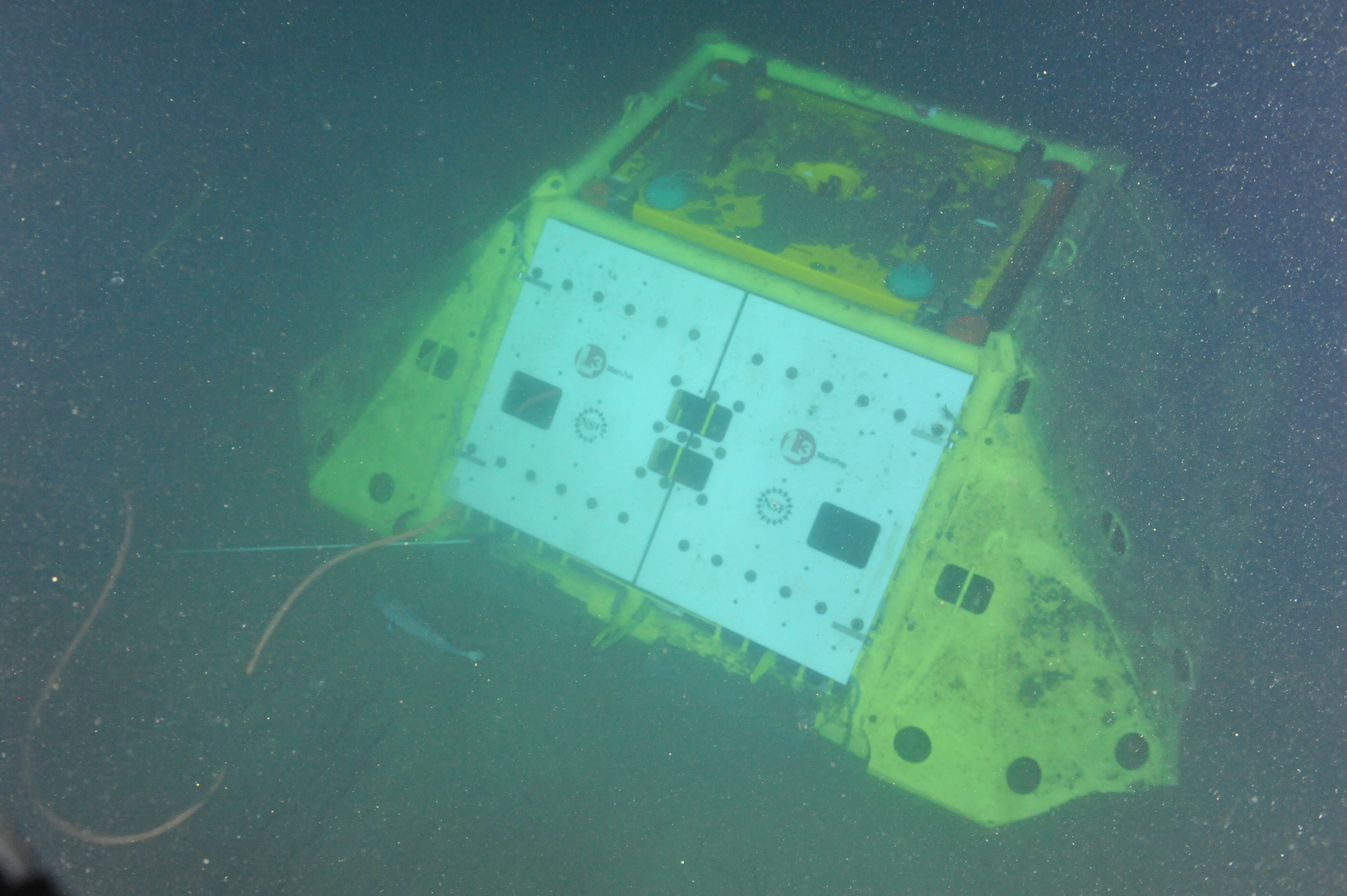
Primary node PN1C connected to the Endurance Oregon Offshore site (600 m), with the protective doors closed. Photo Credit: NSF-OOI/UW/CSSF, Dive 1747, V14
Primary Nodes are large seafloor substations where power from the shore station gets stepped down and provided to medium- and low-power junction boxes through a series of extension cables. The importance of the Primary Nodes is in the name: “node,” as in a central hub with multiple connections, and “primary” as in they are the first point of connection for the 900 km of high-power, high-bandwidth backbone fiber optic cables on the array. The junction boxes, with additional extension cables, then connect to the seafloor instruments and water column moorings.
The nodes also provide 10 Gb bandwidth for communication to and from the infrastructure in the water – bringing the Internet directly into the ocean. Primary Nodes provide 8 kW of power, 10 GbE bandwidth, and pulse per second timing at ocean depths to ~2900 meters and at distances >500 km offshore. Five science ports (1 GbE, 375 V), two high bandwidth science ports (10 GbE, 375 V) and two backbone expansion ports (10 kV) provide significant expansion capabilities through connection of secondary extension cables.

There are seven Primary Nodes on the Regional Cabled Array. Six of the seven Primary Nodes house two main assemblies: the Base Interface Assembly (BIA) and the Science Interface Assembly (SIA). The BIA is hardwired into the Primary Node assembly and to the backbone cable, requiring installation and recovery with an industry cable ship. The BIA houses Medium Voltage Converters (MVC’s) that convert 10 kVDC to 375 VDC to power Low-Voltage, Low-Power, and Medium Power Junction Boxes. The BIA’s also contain two backbone expansion ports (10 kV). The SIA’s are wet-mated within the Primary Node assembly allowing deployment and recovery by remotely operated vehicle for ease in maintenance and upgrades. Each SIA houses five wet-matable science ports with 1 GbE and 375 V and two high-bandwidth ports (10 GbE, 375V) with wetmate connectors. The Primary Node at Mid-Plate only houses a BIA – future expansion will require the inclusion of an SIA. All Primary infrastructure has an expected operational life of at least 25 years.
